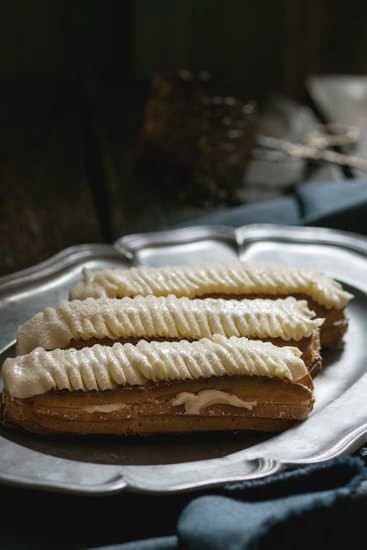Are you looking to add a sweet and creative touch to your cakes? Look no further than the world of cake decor candy. From classic favorites to innovative new ideas, incorporating candy into your cake designs is a surefire way to delight your guests and elevate your baking game.
The use of candy in cake decorating has a long and storied history, dating back centuries. In this article, we will explore the fascinating origins of this artistic practice and how it has evolved over time. Whether you’re a seasoned baker or just starting out, we’ll also provide you with helpful tips and tricks for effectively using candy in your cake decorating endeavors.
We’ll delve into the myriad options available when it comes to choosing the perfect candy for your cake decor, and we’ll also share some unique and creative ideas to inspire your next confectionery masterpiece. So get ready to satisfy your sweet tooth while learning all about the art of cake decor candy.
The History of Cake Decorating With Candy
The use of candy in cake decorating has a rich and fascinating history that dates back centuries. The tradition of adorning cakes with sweet treats is believed to have originated in ancient Greece and Rome, where fruits and nuts were used to embellish special occasion cakes. As sugar became more readily available in Europe during the Renaissance period, it was used to create elaborate decorations for royal feasts and banquets.
In the 18th century, confectioners began to experiment with creating intricate designs and sculptures using sugar, leading to the development of the art of sugar crafting. This eventually paved the way for the use of candy as a popular decorative element in cake design. In the United States, candy decoration became particularly widespread during the mid-20th century, as innovative new products and techniques made it easier than ever to create stunning and whimsical cake designs.
Today, the use of candy in cake decorating continues to evolve, with new trends emerging and innovative techniques being developed. From classic favorites like gumdrops and chocolate bars to trendy options like edible gold leaf and metallic rock candy, there are countless ways to incorporate candy into cake designs. Whether you’re creating a playful birthday cake or an elegant wedding masterpiece, the possibilities for using candy as a decorative element are truly endless.
| History | Description |
|---|---|
| Ancient Origins | The tradition of adorning cakes with fruits and nuts originated in ancient Greece and Rome. |
| Renaissance Era | Sugar became more readily available in Europe, leading to elaborate decorations for royal feasts. |
| 18th Century | Confectioners began experimenting with intricate sugar designs, laying the groundwork for modern candy decoration. |
Tips and Tricks for Using Candy in Cake Decorating
The use of candy in cake decorating has become increasingly popular among bakers and home cooks alike. Whether you are creating a whimsical birthday cake or an elegant wedding cake, incorporating candy can add a fun and unique element to your design. However, using candy in cake decorating requires some tips and tricks to ensure success.
One important tip for using candy in cake decorating is to consider the temperature and humidity of your environment. Candy, especially chocolate-based ones, can melt or become sticky in warm temperatures. It’s important to work in a cool, dry space and to store your decorated cakes in a cool area to prevent the candy from melting or becoming misshapen.
Another useful trick is to choose the right types of candy for your design. Hard candies such as lollipops or rock candy can add texture and height to your cake decorations, while gummy candies can add a playful and colorful touch. It’s also important to consider the flavor profile of the candy and how it will complement the flavors of the cake itself.
Lastly, when using candy for cake decorating, it’s important to consider food safety. Make sure that any candy used on the cake is clean and safe for consumption. Avoid using unwrapped candies or those that may have come into contact with unclean surfaces.
| Candy Option | Description |
|---|---|
| Sprinkles | Colorful sugar decorations that add texture and visual interest to cakes |
| Chocolate Coated Nuts | Crunchy nuts coated in chocolate that can be used as accents or borders on cakes |
| Gummy Bears | Fruity-flavored gummy candies that add a playful touch to cake designs |
By keeping these tips and tricks in mind, you can successfully incorporate candy into your cake decorating projects, adding sweetness and creativity to your confections.
Popular Candy Options for Cake Decor
When it comes to cake decorating, using candy as a decorative element opens up a world of possibilities. There are countless types of candy that can be used to add color, texture, and flavor to your cakes. Whether you’re looking for something classic or seeking out unique and innovative options, there’s a candy out there for every cake decorating need.
Some popular candy options for cake decor include:
- Gummi bears: These colorful and chewy candies are perfect for adding a playful touch to cakes. They can be arranged in patterns or used to create fun designs.
- Sprinkles: Whether traditional round sprinkles or shaped ones, these tiny confections add a festive flair to any cake. From birthdays to holidays, sprinkles are a versatile choice for cake decor.
- Chocolate shavings: For an elegant and decadent touch, chocolate shavings can be used to adorn cakes. Whether dark, milk, or white chocolate, they add visual interest and delicious flavor.
- Candy pearls: These small, shiny candies come in a variety of colors and can be used to create elegant designs on cakes. They’re perfect for adding a touch of sophistication to special occasion cakes.
In addition to these popular options, the world of cake decor candy also includes nonpareils, rock candy, candy melts for creating custom decorations, and much more. The key is to choose candies that complement the flavors of your cake while also adding visual appeal.
When selecting candy for cake decorating, it’s important to consider the overall theme and desired aesthetic of the cake. Some candies may work better with certain designs or color schemes than others. It’s also essential to consider the texture and consistency of the candy when incorporating it into your cake decor plans. With so many delightful options available, the only limit is your imagination when it comes to choosing popular candy options for cake decor.
Unique and Creative Cake Decor Candy Ideas
When it comes to decorating a cake with candy, the possibilities are endless. From colorful gummies to decadent chocolate truffles, there are so many ways to add a sweet and unique touch to your baked creations. Here are some creative ideas for using candy in your cake decor:
- Create a colorful mosaic: Use an assortment of small candies like M&M’s, Skittles, or jellybeans to create a vibrant mosaic on top of your cake. Simply arrange the candies in a pattern or design of your choice for a stunning and eye-catching effect.
- Make candy flowers: Instead of using traditional frosting flowers, try making beautiful blooms out of edible candy. Use marshmallows, licorice, or gumdrops to craft petals and stems for a sweet and whimsical floral arrangement on your cake.
- Build a candy castle: For a fun and playful cake decor idea, use wafer cookies, chocolate bars, and hard candies to construct a magical candy castle on top of your cake. This is perfect for children’s birthday parties or themed celebrations.
Incorporating candy into your cake decor adds not only color but also texture and flavor to your creations. Whether you’re aiming for an elegant and sophisticated look or a whimsical and playful design, the addition of candy can take your cakes to the next level.
So go ahead and get creative with your cake decor candy. The only limit is your imagination.
How to Properly Incorporate Candy Into Cake Designs
When it comes to incorporating candy into cake designs, there are several important factors to consider to ensure that the end result is not only visually appealing but also tasty and structurally sound. Whether you are using candy as embellishments or as the main decorative element, proper incorporation is crucial for a successful cake decor candy creation.
Choosing the Right Candy
The first step in properly incorporating candy into cake designs is selecting the right type of candy. Not all candies are suitable for use in cake decorating, so it’s important to choose ones that will complement the flavor of the cake and hold up well in terms of stability and texture. Hard candies, gummy candies, chocolate pieces, and nonpareils are popular choices for decorating cakes, as they come in a variety of shapes, sizes, and colors.
Placement and Arrangement
Once you have chosen the appropriate candies for your design, it’s essential to carefully plan their placement and arrangement on the cake. Consider the overall look you want to achieve and strategically place the candies to create a visually appealing design.
Additionally, be mindful of the weight of the candies and how they will affect the stability of the cake. Layering candies or adding them to specific areas can create dimension and interest while ensuring that the cake remains structurally sound.
Integrating With Other Decorative Elements
To properly incorporate candy into cake designs, it’s important to integrate these sweet decorations seamlessly with other decorative elements such as frosting, fondant, or piping. Consider using frosting or edible glue to securely adhere the candies to the cake while also adding cohesiveness to the overall design. By blending different decorative elements effectively, you can create a harmonious and professional-looking finished product that showcases both creativity and skill.
Incorporating candy into cake designs can be a fun and delicious way to elevate your creations. With careful consideration of candy selection, placement, arrangement, and integration with other elements, you can create stunning cakes that delight both visually and taste-wise.
Step-by-Step Guide to Creating a Candy-Themed Cake
When it comes to creating a candy-themed cake, the possibilities are endless. Whether you’re decorating for a birthday, holiday, or special occasion, incorporating candy into your cake design can add a fun and colorful touch that will delight both kids and adults alike. In this step-by-step guide, we’ll walk you through the process of creating a mouth-watering candy-themed cake that is sure to impress.
Step 1: Choose Your Candy
The first step in creating a candy-themed cake is selecting the right types of candy to use as decorations. Consider the theme of your cake and choose candies that complement the overall design. Popular options include gummy worms, lollipops, chocolate bars, jelly beans, and sprinkles. You can also mix and match different types of candy to add variety and visual interest to your cake.
Step 2: Prepare Your Cake
Before you can start decorating with candy, you’ll need to prepare your cake base. Whether you’re using a store-bought cake or baking one from scratch, make sure it is cooled completely before moving on to the decorating stage. It’s also important to frost your cake with a layer of buttercream or fondant icing to provide a sticky surface for attaching the candy decorations.
Step 3: Arrange Your Candy Decorations
Once your cake is prepped and ready to go, it’s time to get creative with your candy decorations. Start by placing larger candies around the perimeter of the cake and filling in any gaps with smaller candies or sprinkles.
You can create patterns, designs, or even build three-dimensional scenes using different types of candy. Don’t be afraid to experiment and have fun with this step – after all, it’s all about creating a visually stunning and delicious masterpiece.
The Future of Cake Decor Candy
The use of candy as a decorative element in cake design has come a long way. As the demand for creative and unique cake decor continues to rise, the future of cake decor candy looks promising with evolving trends and exciting innovations.
One of the key trends in cake decor candy is the fusion of traditional confectionery with modern technology. Pastry chefs and cake decorators are now incorporating edible printed images onto candies, allowing for intricate designs and personalized touches on cakes. This innovative approach adds a new dimension to cake decor candy, giving decorators more flexibility and creativity in their designs.
Another trend that is gaining popularity in the world of cake decor candy is the use of healthier and organic options. With a growing consciousness towards healthy living, there is a shift towards using natural, organic candies as decorative elements in cakes. Health-conscious consumers are seeking alternatives to synthetic food colorings and additives, leading to an increased demand for artisanal and organic candy options that not only enhance the visual appeal but also meet dietary preferences.
Innovations in 3D printing technology have also made an impact on the future of cake decor candy. Manufacturers are now exploring 3D-printed candy molds that allow for intricate and detailed decorations on cakes.
This technological advancement opens up endless possibilities for creating elaborate and eye-catching designs with candy, pushing the boundaries of traditional cake decorating methods. With these exciting trends and innovations, it’s clear that the future of cake decor candy holds great potential for elevating the art of cake decoration to new heights.
Conclusion
In conclusion, cake decor candy offers a fun and delicious way to enhance the beauty and flavor of your cakes. The use of candy in cake decorating has a rich history dating back centuries, and it continues to evolve as new trends and innovations emerge. By following tips and tricks for using candy in cake decorating, you can create unique and creative designs that will impress your friends and family.
As discussed, there are various popular candy options for cake decor, from colorful sprinkles to chocolate shavings to gummy candies. These candies can be used in countless ways to add texture, color, and flavor to your cakes. Whether you’re looking to create a whimsical, themed cake or a more elegant, sophisticated design, there are endless possibilities when it comes to incorporating candy into your cake creations.
With the step-by-step guide provided in this article, you can learn how to properly incorporate candy into your cake designs. From choosing the right type of candy to arranging it strategically on your cake, you’ll be equipped with all the knowledge you need to successfully create a candy-themed masterpiece.
In the future, we can expect to see even more innovative techniques and trends emerge in the world of cake decor candy, offering exciting new possibilities for celebrating with sweet, edible decorations. So go ahead and let your creativity run wild as you experiment with different types of candy to elevate your next cake creation.
Frequently Asked Questions
How to Make Candy for Cake Decorating?
Making candy for cake decorating involves melting chocolate or candy melts, pouring them into molds, allowing them to set, and then using them to decorate the cake. You can also use fondant to create various candy shapes.
How Do You Decorate the Top of a Cake With Candy?
Decorating the top of a cake with candy can be done by arranging the candies in a pattern, creating a border around the edges, or placing them strategically in the center. It’s important to consider the color scheme and overall design of the cake.
What Are Cake Decorating Balls Called?
Cake decorating balls are commonly referred to as dragees. These small, round decorative confectionery items are made from sugar-coated nuts or seeds and are often used to add texture and visual interest to cakes, cupcakes, and other baked goods.

Welcome to our cake decorating blog! My name is Destiny Flores, and I am the proud owner of a cake decorating business named Cake Karma. Our mission is to provide delicious, beautiful cakes for all occasions. We specialize in creating custom cakes that are tailored specifically to each customer’s individual needs and tastes.





